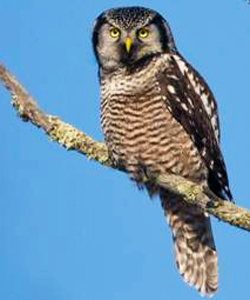|
Owls in Mythology – Wise or Sinister?
|
|
|
Owls first began appearing in human history in Greek
Considered sacred by the Native American Hopi tribe, the Burrowing Owl, who nests under ground, is revered as the protector of the underworld, and the Dakota Hidatsa Indians see him as a protective spirit for brave warriors. A Zuni legend tells us that during a ceremonial dance, owls were
Many African cultures believe the owl is directly associated with sorcery and magic. They believe that owls are a bad omen and when one crosses your path, death is soon to follow. In the 18th C, owls were also considered evil throughout much of Great Britain. Superstition dictated that nailing an owl to a barn door would keep evil at bay or protect from lightening. And British Barn owls were said to predict weather – screeching owls were thought to foretell of oncoming inclement weather.
These days, Snowy owls take front stage as heros in “Harry Potter” and Barn owls in “Legends of the Guardians”, continuing to charm and impress us with their wisdom and magical powers. But no matter whether we think these birds are wise or sinister, they continue to be a part of every culture and always a great find for any bird watcher. |
|

 mythology when Athena, the goddess of wisdom took on the owl as her companion. The Little Owl was her chosen species and coins were minted with Athena on the front and the owl on the back. This is likely the beginning of the ‘wise’ owl connotation.
mythology when Athena, the goddess of wisdom took on the owl as her companion. The Little Owl was her chosen species and coins were minted with Athena on the front and the owl on the back. This is likely the beginning of the ‘wise’ owl connotation.